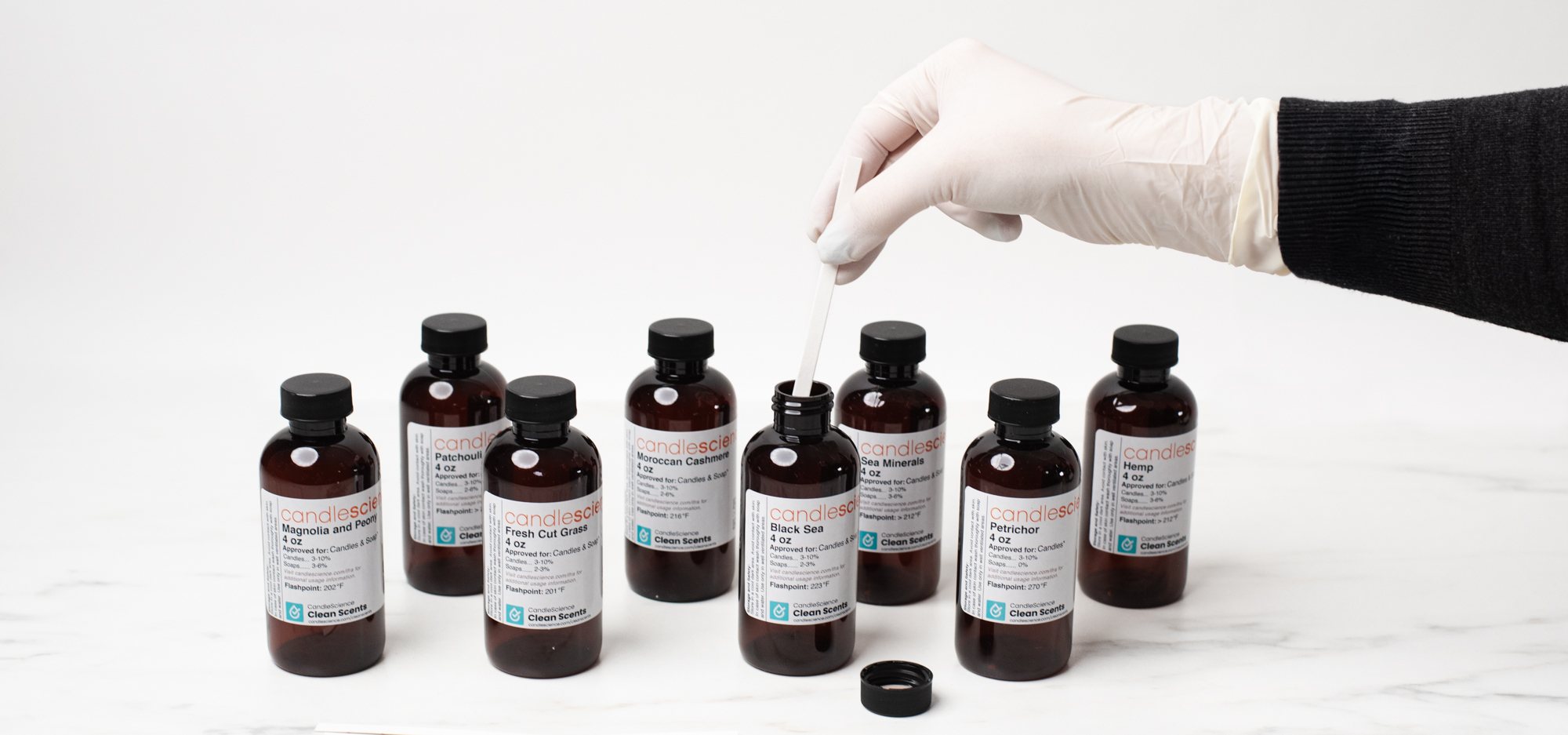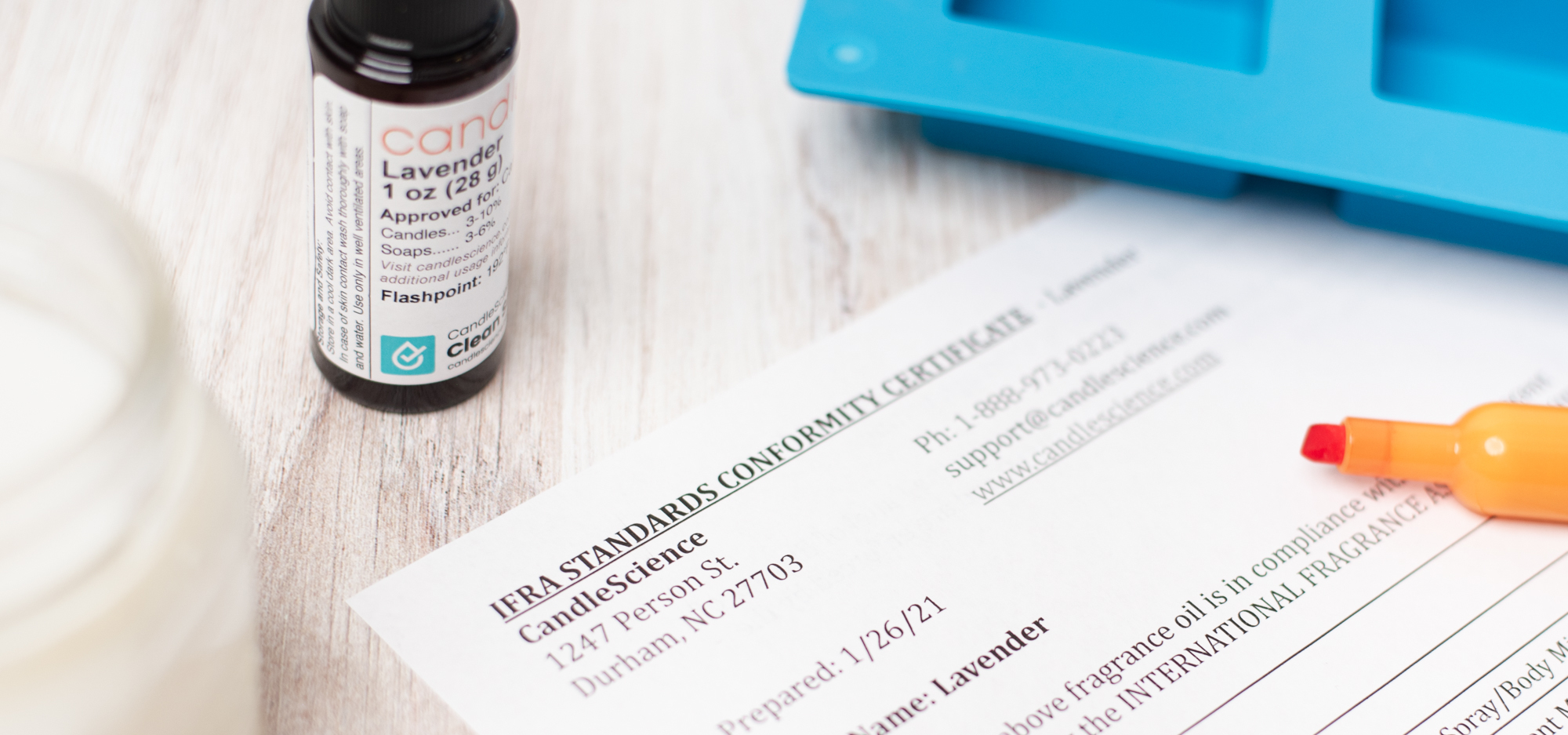What are fragrance oils?
Fragrance oils are concentrated liquid scents used to add aromas to a vast array of products like candles, soaps, perfumes, cosmetics, lotions, detergents, household cleaners, and more.
Not all fragrance oils are created equal, but here at CandleScience we've developed and curated some of the very best for our line. All CandleScience fragrance oils are extensively tested and rated for performance in soy wax, as well as being excellent performers in other natural waxes, wax blends, and paraffin wax.
But CandleScience fragrances aren't just for scented candles and wax melts—many are also compatible for use in reed diffusers and room sprays. And most (though not all) are approved for use in bath and body products like soap, lotion, perfume oils, and bath bombs. For easy reference, we include the main approved usages on the product page for every fragrance, and on the fragrance oil bottle itself.
Fragrance oil ingredients
So what are fragrance oils made of? Our fragrance oils are a combination of natural essential oils, synthetic aroma chemicals, solvents, and diluents. The final fragrance oils are never diluted, so each has a strong and concentrated aroma that doesn't disappear when burned in a candle.
While fragrance oils contain natural components like essential oils, they are considered synthetic. However, the beauty of working with synthetic fragrance oils is that they are formulated to be safe in final products and perform consistently (unlike essential oils that can, in some cases, experience fragrance shifts, especially when burned in candles.)
Essential oils
Essential oils are pure liquids containing aroma compounds that are removed from the natural materials of plants like seeds, flowers, leaves, roots, and stems or bark of plants through methods like steam distillation, expression (like cold pressing), or extraction. Essential oils harness the distinctive essence, or scent, of the plant it was made from and are frequently used in perfumes, flavorings, and medicines. Most of the fragrance oils we carry are infused with essential oils and they are listed on each fragrance's product page.
The only way to naturally scent candles and other products is with essential oils. We now offer a premium line of pure essential oils tested for performance in candles and melts, bath and body products, and reed diffusers.
Aroma chemicals
Because essential oils are not available for every scent we'd like to use, we draw on synthetic aromas that come in powder or liquid form. We use these concentrated compounds when no essential oil, or naturally occurring scent, is available—like in Chocolate Fudge or Blueberry Cheesecake fragrances.
Solvents and diluents
Solvents are dissolving agents. Diluents are diluting substances.
When a synthetic aroma chemical is in powder form, a solvent is required to convert it to a liquid for use in fragrance oil. Solvents help the components of a fragrance burn more easily, blend better, improve fragrance throw, and increase fragrance longevity.
If an essential oil is in a highly concentrated form, a diluent is required to thin it so that it will remain suspended in the liquid fragrance oil. This substance adjusts the density of fragrance oils so that it's easier for the wax/fragrance mixture to be pulled up through the wick to be burned by the flame.
Some diluents are used to "cut" fragrance oils after they are produced so that an expensive fragrance oil can be sold at a lower price with a weaker strength. Once CandleScience fragrances are developed, they are NEVER diluted or "cut" in any way.
The cost of fragrance oils
Because of the variety of essential oils and aromatic synthetic chemicals used to produce the quality fragrance oils in the CandleScience line, the cost of each will vary. When a fragrance has several essential oils or contains distinctive synthetic fragrances, the cost will be higher. Since the price of a scent is determined by its components, some of the more unique complex fragrances are more expensive to develop. We are very particular about the quality of fragrances in the line, so there are no poor-performing fragrance oils. Wholesale fragrance oils are available in bulk sizes with volume discounts.
The components of our fragrance oil blends are proprietary information, but when we are able to share those, we do.
What about phthalates and other hazardous chemicals?
As of August 2019, 100% of our fragrance oils are formulated without phthalates.
We've always adhered to the strict RIFM (Research Institute for Fragrance Materials) standard regarding fragrance safety. But we also think these safety standards could go even further, and in July 2020, we announced our CandleScience Clean Scents™ initiative.
CandleScience Clean Scents™ are fragrance oils that avoid carcinogens, toxins, and other hazardous chemicals commonly found in fragrance oils. While our entire line of fragrance oils are non-toxic when used for their intended purpose and in approved percentages, CandleScience Clean Scents gives you the peace of mind of working with the safest supplies available.
CandleScience has always been committed to maintaining the safest, highest quality, most thoroughly tested fragrance line in the industry. We want our community to experience the joy of creating something amazing, confident that they are using the safest, highest-quality supplies on the market.
Additional fragrance oil resources
Learn more about how to work with fragrance oils and essential oils with these articles and tutorials!

How to evaluate fragrance oils

How to use IFRA certificates
